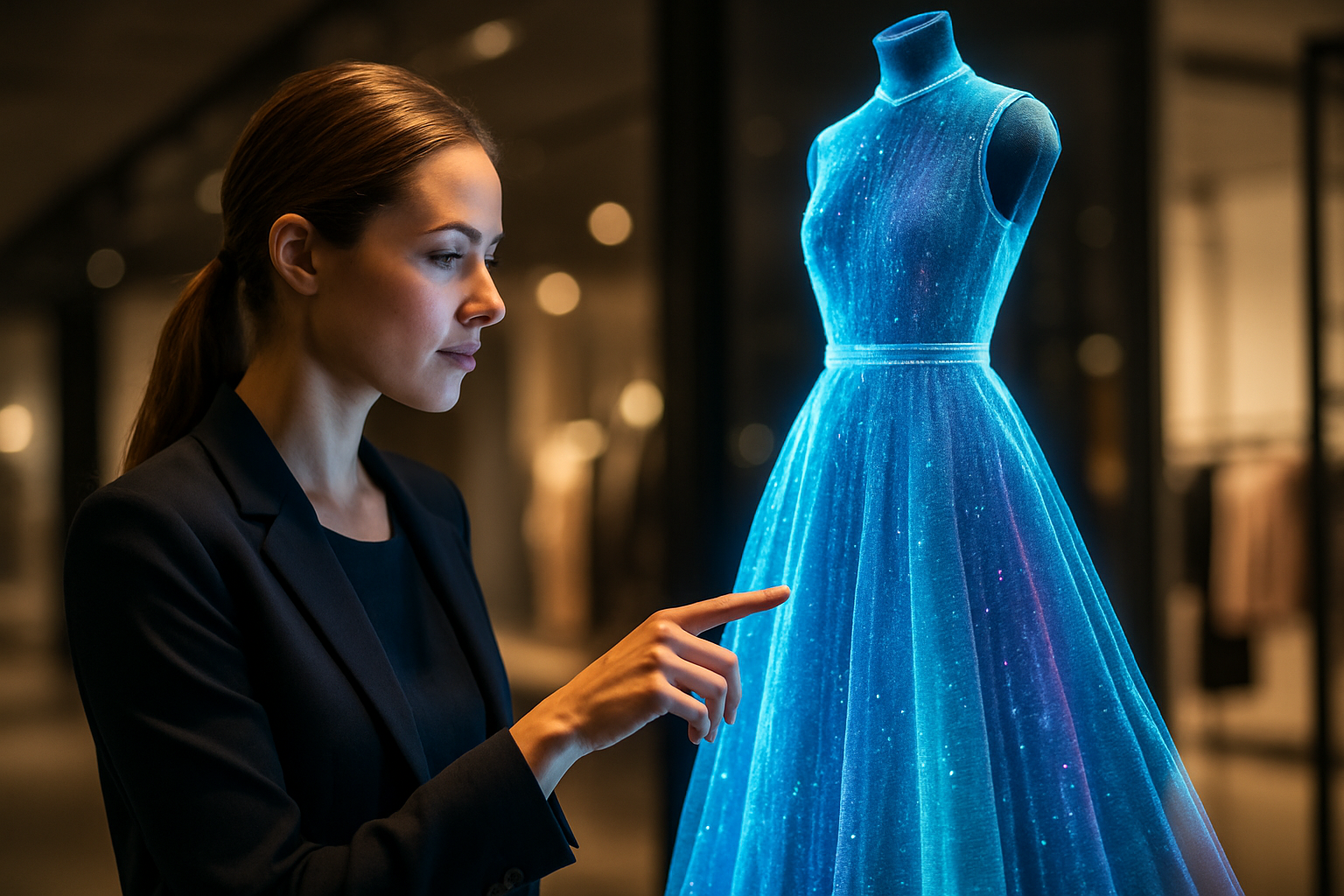Holographic Fashion: The Intersection of Tech and Couture
In a world where digital innovation constantly reshapes our reality, the fashion industry stands at the precipice of a revolutionary transformation. Holographic fashion, once confined to the realm of science fiction, is now emerging as a tangible and exciting frontier in the world of haute couture. This groundbreaking fusion of technology and design is not only redefining runway experiences but also challenging our perceptions of clothing and self-expression in the digital age.

From Runway to Reality
What was once a novelty reserved for high-concept fashion shows has rapidly evolved into a more accessible form of expression. Today, holographic fashion encompasses everything from subtly shimmering fabrics that change color with movement to fully projected garments that exist solely in the digital realm. This evolution has been driven by improvements in wearable technology, more sophisticated projection systems, and a growing acceptance of digital aesthetics in mainstream fashion.
The Technology Behind the Trend
At the heart of holographic fashion lies a complex interplay of cutting-edge technologies. Advanced projection mapping allows designers to create dynamic, ever-changing patterns on otherwise plain garments. Augmented reality (AR) apps enable users to virtually try on holographic outfits, blurring the lines between physical and digital wardrobes. Meanwhile, developments in smart fabrics and flexible displays are bringing us closer to clothing that can change its appearance at will, responding to the wearer’s preferences or environment.
Sustainability and the Digital Wardrobe
One of the most compelling aspects of holographic fashion is its potential to address sustainability concerns in the fashion industry. By allowing consumers to experiment with endless styles and looks without the need for physical production, holographic clothing could significantly reduce waste and overproduction. This digital wardrobe concept is gaining traction among environmentally conscious consumers and forward-thinking brands alike, offering a glimpse into a more sustainable future for fashion.
Cultural Impact and Identity Expression
Holographic fashion is more than just a technological marvel; it’s a powerful tool for self-expression and identity exploration. In a world where social media and digital presence play an increasingly important role in how we present ourselves, holographic clothing offers unparalleled opportunities for creativity and personalization. From shape-shifting outfits that adapt to different social contexts to digital skins that reflect our moods or interests, this technology is redefining the relationship between fashion and identity in the digital age.
Challenges and Ethical Considerations
As with any emerging technology, holographic fashion faces its share of challenges and ethical questions. Issues of privacy and data security arise when clothing becomes a connected device. There are also concerns about the potential for digital fashion to exacerbate body image issues or create new forms of social pressure. As the technology develops, it will be crucial for designers, technologists, and policymakers to address these concerns thoughtfully and proactively.
The Future of Fashion Shows and Retail
Holographic technology is not just changing what we wear but also how we experience and consume fashion. Virtual and augmented reality fashion shows are becoming increasingly sophisticated, allowing designers to present collections in immersive, interactive environments that transcend physical limitations. In retail, holographic displays and virtual fitting rooms are revolutionizing the shopping experience, offering customers new ways to engage with products and brands.
Bridging Art and Technology
At its core, holographic fashion represents a fascinating convergence of art, technology, and design. It challenges traditional notions of materiality and craftsmanship while opening up new avenues for creative expression. As artists and designers continue to push the boundaries of what’s possible with holographic technology, we can expect to see even more innovative and thought-provoking creations that blur the lines between fashion, art, and digital media.
In conclusion, holographic fashion stands at the forefront of a transformative movement in the world of design and technology. As it continues to evolve, it promises not only to change the way we dress but also to reshape our understanding of identity, sustainability, and the very nature of fashion itself. In this brave new world of digital couture, the only limit is our imagination.





